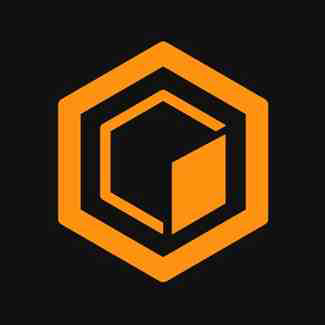

ZKsync 價格ZK
您今天對 ZKsync 感覺如何?
ZKsync 今日價格
ZK 的最高價格是多少?
ZK 的最低價格是多少?
ZKsync 價格預測
什麼時候是購買 ZK 的好時機? 我現在應該買入還是賣出 ZK?
ZK 在 2026 的價格是多少?
ZK 在 2031 的價格是多少?
ZKsync 價格歷史(USD)
 最低價
最低價 最高價
最高價 
ZKsync 市場資訊
ZKsync 行情
ZKsync 持幣分布集中度
ZKsync 地址持有時長分布

ZKsync 評級
ZKsync (ZK) 簡介
什麼是 zkSync?
zkSync 是以太坊的 Layer 2 擴展解決方案,旨在增強網路的交易吞吐量並降低交易費用,同時保有安全性和去中心化的核心價值。zkSync 零知識匯總(zk-rollup)技術由 Matter Labs 開發,致力於解決以太坊的可擴展性挑戰。
以太坊是世界第二大區塊鏈,面臨著可擴展性和高交易費用的問題,特別是在網路活動頻繁的時期。zkSync 旨在聚合鏈下多個交易,並向以太坊區塊鏈提交單一證明,以解決這些問題,從而顯著減少運算負載和相關成本。因此,zkSync 是有效、可持續擴展以太坊的一項重要發展。
相關頁面
官方文件: https://docs.zksync.io/
官方網站: https://zksync.io/
zkSync 如何運作?
zkSync 採用 zk-rollup 技術,提高以太坊網路的效率。本質上,zk-rollups 捆綁了數百個鏈下交易,建立了加密證明,以證明這些交易是有效的。然後將該證明提交給以太坊主網進行驗證。由於僅需要在鏈上驗證證明,因此該過程大大地減少了以太坊網路的負載,從而降低了燃料費並縮短了交易時間。
此外,zkSync 被設計為具有 EVM(以太坊虛擬機)兼容性。這意味著開發人員可以在 zkSync 上部署現有的以太坊智能合約,而無需重寫程式碼。這類兼容性降低了開發人員的進入門檻,並促進去中心化應用程式(DApp)無縫遷移至 zkSync,有助於該擴展解決方案的更廣泛採用。
zkSync 還結合了原生帳戶抽象,透過允許與區塊鏈進行更直觀和用戶友善的互動,以強化用戶體驗。用戶可以自動付款,以任何代幣支付燃料費,甚至讓其他方承擔這些費用。這種靈活性旨在讓更多人使用區塊鏈技術,進一步推動了 zkSync 的採用。
安全性是 zkSync 的另一個重要面向。該協議歷經廣泛的審計和壓力測試,以確保其穩健性。透過繼承以太坊主網的安全性並新增額外的保護層,zkSync 為各種區塊鏈應用程式,特別是去中心化金融(DeFi)領域的應用程式,提供了高度安全的環境。
什麼是 ZK 代幣?
ZK 是 zkSync 生態系中的原生功能型和治理代幣,在維護和增強協議的運作方面,發揮關鍵作用。ZK 代幣的主要用途之一是支付 zkSync 網路上的交易費用。與以太坊主網相比,使用 ZK 代幣付費可降低成本。
除了交易費用之外,ZK 代幣也是 zkSync 去中心化治理模式中不可或缺的一部分。代幣持有者可參與關鍵決策過程,並對影響協議未來方向的提案進行投票。這種民主方式確保了 zkSync 的發展和演變能反映出社群的集體利益。
此外,ZK 代幣還可以激勵網路安全和參與度。用戶可以質押 ZK 代幣來支援網路的安全基礎設施,從而獲得額外的代幣作為獎勵。此外,zkSync 生態系內的流動性提供者將獲得 ZK 代幣獎勵,確保去中心化交易所(DEX)和平台上的其他金融活動有充足的流動性。ZK 的總供應量為 210 億枚。
zkSync 是一項好投資嗎?
投資任何加密貨幣,包括 zkSync,都需要仔細評估和徹底研究。加密貨幣市場的波動性,意味著價格可能在短期內大幅震盪。在進行投資之前,請務必了解市場動態、評估您的風險承受能力並考慮收益和損失的可能性。掌握市場趨勢並與加密貨幣社群互動,有助於確定 zkSync 是否為 2024 年的一項好投資。
此外,分散風險是管理投資風險的關鍵策略。與其將所有資源投入一項資產,不如考慮將投資分散到各種加密貨幣和傳統資產。這種方法有助於減輕潛在損失,並打造更平衡的投資組合。始終保持資訊靈通,隨時準備根據市場變化調整投資策略,確保您的投資組合保持穩健,並為未來做好充分準備。
如何購買 zkSync(ZK)?
想投資 zkSync(ZK)嗎?只需 2 分鐘,即可在 Bitget 上建立帳戶 ,並開始交易 ZK。
zkSync 相關文章:
ZK 兌換當地法幣匯率表
- 1
- 2
- 3
- 4
- 5
如何購買 ZKsync(ZK)

建立您的免費 Bitget 帳戶

認證您的帳戶

購買 ZKsync (ZK)
交易 ZK 永續合約
在 Bitget 上註冊並購買 USDT 或 ZK 後,您可以開始交易衍生品,包括 ZK 合約和槓桿交易,增加收益。
ZK 的目前價格為 $0.1072,24 小時價格變化為 +1.01%。交易者可透過做多或做空 ZK 合約獲利。
ZKsync 動態


快速摘要:Abstract Chain 目前正在調查一些用戶報告的錢包資金流失問題。此次安全漏洞似乎與連接到鏈上幻想遊戲 Cardex 有關。



購買其他幣種
用戶還在查詢 ZKsync 的價格。
ZKsync 的目前價格是多少?
ZKsync 的 24 小時交易量是多少?
ZKsync 的歷史最高價是多少?
我可以在 Bitget 上購買 ZKsync 嗎?
我可以透過投資 ZKsync 獲得穩定的收入嗎?
我在哪裡能以最低的費用購買 ZKsync?
您可以在哪裡購買 ZKsync(ZK)?
影片部分 - 快速認證、快速交易

Bitget 觀點



相關資產


































